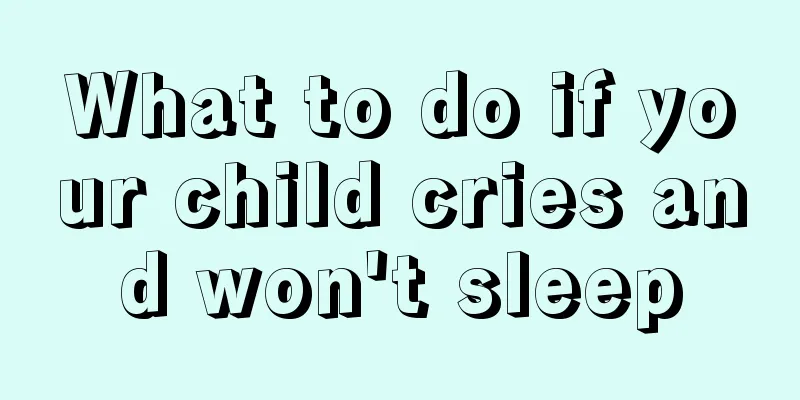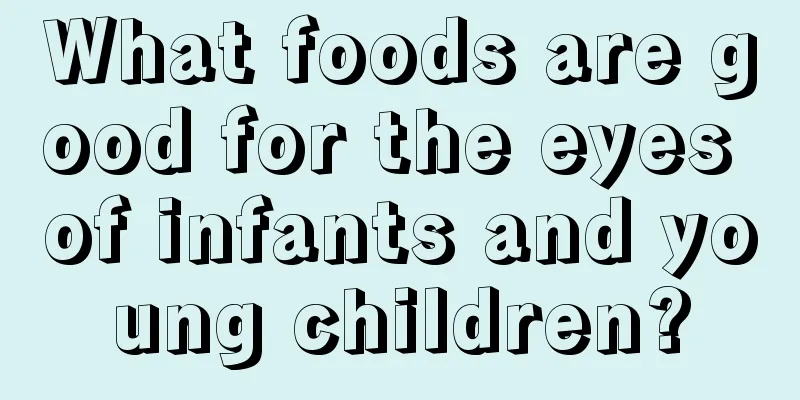What are the causes and symptoms of headaches in children?

|
There are many reasons that cause children's headaches, including both medical reasons and physiological reasons. For example, if the room is too hot or the child is in a bad mood, these may cause headaches. In addition, colds, fever, migraines, meningitis and other diseases are also important reasons for children's headaches. When a child has a severe headache, he or she must go to the hospital for examination in time. 1. Fever, use of certain drugs, metabolic abnormalities, etc. can all cause contraction and dilation of cerebral blood vessels, thereby causing headaches. 2. Migraine: 3. Tension headache: often caused by long-term mental stimulation such as mental stress, depression, tension between family members, learning difficulties, etc., and is more common in school-age children or teenagers. 4. Brain tumors: 5. Meningitis: When the meninges are inflamed and irritated, headaches will occur. 6. Problems with other organs in the head, such as sinusitis, glaucoma, eyestrain, myopia, otitis media, and toothache, may also cause headaches. 7. Systemic diseases: In addition to head diseases, systemic diseases such as hypertension, kidney disease, hypoglycemia, etc. can also cause headaches. 8. Emotional reactions, including tension, depression, anxiety, stress, etc., are also common causes of headaches. Symptoms of headache in children 1. Acute headache: This condition often causes a sudden and noticeable headache, but the pain only occurs this time and does not recur. The pain can be spread throughout the head or localized in one area, and is sometimes accompanied by other symptoms such as fever, nausea, and vomiting. Acute headaches are mostly caused by a certain reason or disease, such as fever, bruise, toothache, meningitis, etc. Once the cause is eliminated, the headache will also disappear and will not recur in the future. 2. Acute recurrent headache: It refers to headaches that occur again and again, each lasting from a few hours to a few days. The headaches can be mild or severe, and are sometimes accompanied by symptoms such as nausea, vomiting, blurred vision, and abdominal pain. After the headache disappears, there will be no more uncomfortable feeling, but the headache will reappear in the future. Migraine is the most common example. 3. Chronic headache: Chronic headache means that the pain exists every day, but the pain is not severe. It is just a dull pain every day and feels uncomfortable, but the headache does not get worse. Children with this kind of headache often suffer from depression, sadness and other problems, which are mostly caused by study pressure, interpersonal relationships or other psychological problems. |
<<: What to do if your child has severe influenza
>>: How to treat lymphadenitis in children
Recommend
Symptoms of rhinitis in a three-year-old child
Rhinitis is most of the time a disease caused by ...
What should a 2-year-old child eat if he has a cough?
If a two-year-old child gets sick all the time, i...
What to do with femoral head necrosis in children
What should we do with femoral head necrosis in c...
Is Down syndrome screening accurate?
In recent years, the accuracy of Down syndrome sc...
What is the situation of a two-month-old baby having less sleep?
In the eyes of parents, the most important thing ...
What are the symptoms of laryngitis in children?
Pharyngitis is a common disease in children, espe...
What should I do if my June-month-old baby has a cold and a stuffy nose?
A baby's body is always very fragile when it ...
What medicine should I take for my amblyopia?
Amblyopia is a relatively common pediatric eye di...
Swollen inguinal lymph nodes in baby
When there is a problem with the lymph nodes, the...
Is it normal for a six-month-old baby’s anterior fontanelle to close?
Generally speaking, whether the baby's fontan...
Prevention and nursing of severe pneumonia in children
Everyone is familiar with pneumonia. When childre...
What are the red spots on the baby's face?
What's going on with the red spots on the bab...
What are the antiviral drugs for babies?
A large part of the reason why babies get sick is...
Why do premature babies have colds and nasal congestion?
In each of our families, the health of the baby i...
What is the best age for children to learn swimming?
The temperature in summer is very high. In a hot ...









